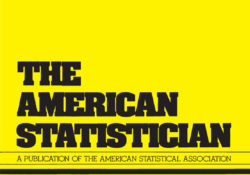eric.ed.gov har udgivet: This paper explores the use of gamification in math lessons for children in order to highlight the relationship between math education and its application to society. In school education, there is an existing problem about how to relate concepts learned in math to everyday life. One of the reasons for this problem is that it is difficult for teachers to set appropriate questions for students. We investigated a classroom using gamification intended for elementary school sixth grade students (34 people). As a result, it is argued that gamification is effective in math education. [For full proceedings, see ED571459.] Link til kilde
Like this:
Like Loading...
tandfonline.com har udgivet en rapport under søgningen „Teacher Education Mathematics‟: ABSTRACT Formulae display:?Mathematical formulae have been encoded as MathML and are displayed in this HTML version using MathJax in order to improve their display. Uncheck the box to turn MathJax off. This feature requires Javascript. Click on a formula to zoom. ABSTRACT Relying on effect size as a measure of practical significance is turning out to be just as misleading as using p-values to determine the effectiveness of interventions for improving clinical practice in complex organizations such as schools. This article explains how effect sizes have misdirected practice in education and other disciplines. Even when effect size is incorporated into RCT research the recommendations of whether interventions are effective are misleading and generally useless to practitioners. As a result, a… Continue Reading →
Like this:
Like Loading...
eric.ed.gov har udgivet: This paper reports on a design-based implementation study of the use of a diagnostic classroom assessment tool framed on learning trajectories (LTs) for middle grades mathematics, where teachers and students are provided immediate data on students‛ progress along LTs. The study answers the question: „How can one characterize the challenges encountered when a school implements a diagnostic assessment system around learning trajectories at scale?‟ by identifying three explanatory themes: shifting to classroom assessment, understanding the concept and content of the LT, and seeing the results as a call to action. Each theme is discussed with references to observed activities and discussions with participants and related to the challenges connected with taking the concept of LTs to scale. [For the complete proceedings, see ED606556.] Link til kilde
Like this:
Like Loading...

tandfonline.com har udgivet en rapport under søgningen „Teacher Education Mathematics‟: Abstract Abstract Many statistics departments in institutions throughout the world hire graduate students to teach and assist with the teaching of undergraduate and graduate-level statistics courses. As many of these graduate student instructors and graduate teaching assistants (GTAs) have little or no previous experience teaching statistics, statistics departments are faced with the challenge of preparing their graduate students for teaching roles. Articles have been written sharing various departments’ strategies for GTA training and development programs, however, articles are often not supported by empirical research. This article provides a review of empirical research regarding graduate students’ preparation for teaching—first focusing on graduate students in statistics, specifically, and second offering what can be learned from studies of graduate students in other disciplines.… Continue Reading →
Like this:
Like Loading...
tandfonline.com har udgivet en rapport under søgningen „Teacher Education Mathematics‟: Abstract Abstract Nolan and Temple Lang’s Computing in the Statistics Curricula (2010) advocated for a shift in statistical education to broadly include computing. In the time since, individuals with training in both computing and statistics have become increasingly employable in the burgeoning data science field. In response, universities have developed new courses and programs to meet the growing demand for data science education. To address this demand we created Data Science in Practice, a large-enrollment undergraduate course. Here, we present our goals for teaching this course, including: (1) conceptualizing data science as creative problem solving, with a focus on project-based learning, (2) prioritizing practical application, teaching and using standardized tools and best practices, and (3) scaling education through coursework that… Continue Reading →
Like this:
Like Loading...


